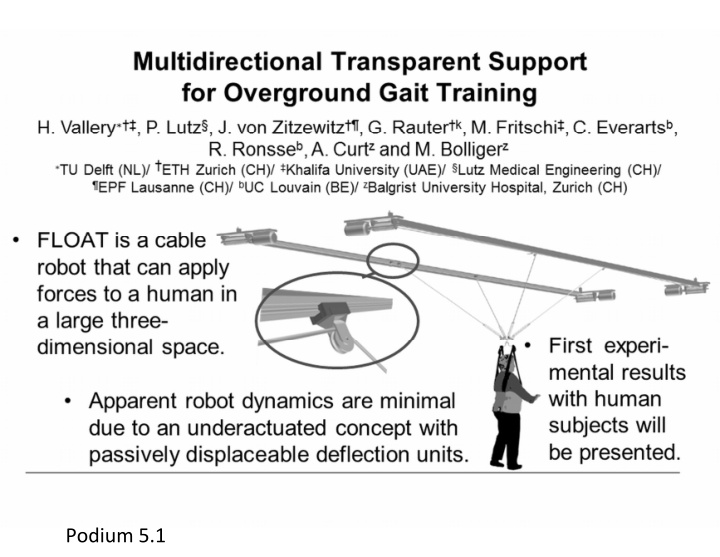



Podium 5.1
Improving Transparency of Powered Exoskeletons Using Force/Torque Sensors on the Supporting Cuffs D. Zanotto: University of Delaware, Newark, DE, USA T. Lenzi: Rehabilitation Institute of Chicago, Chicago, IL, USA P. Stegall and S. K. Agrawal: Columbia University, NY, USA. • An "interaction-sensing-based" controller can improve transparency compared to the traditional force-feedback controller which exploits collocated torque sensors. • Experimental results showed that: – the traditional controller lets the wearer carry the inertial loads generated by the robot links; – the interaction-sensing-based controller substantially reduced the interaction torques, thereby inducing smaller changes in the user’s natural gait in terms gait kinematics, gait timing and muscle activations. Podium 5.2
Podium 5.3
Biologically-inspired Soft Exosuit A Asbeck, R Dyer, A Larusson, C Walsh: Harvard University, USA • A novel “exosuit” made of fabrics has been developed that applies forces to the body during walking • Unlike traditional exoskeletons, the exosuit contains no rigid framing elements, yet can apply moments at the ankle and hip with magnitudes of >20% of those naturally generated in walking • Measurements were taken of the suit’s stiffness and behavior during walking Podium 5.4
Recommend
More recommend